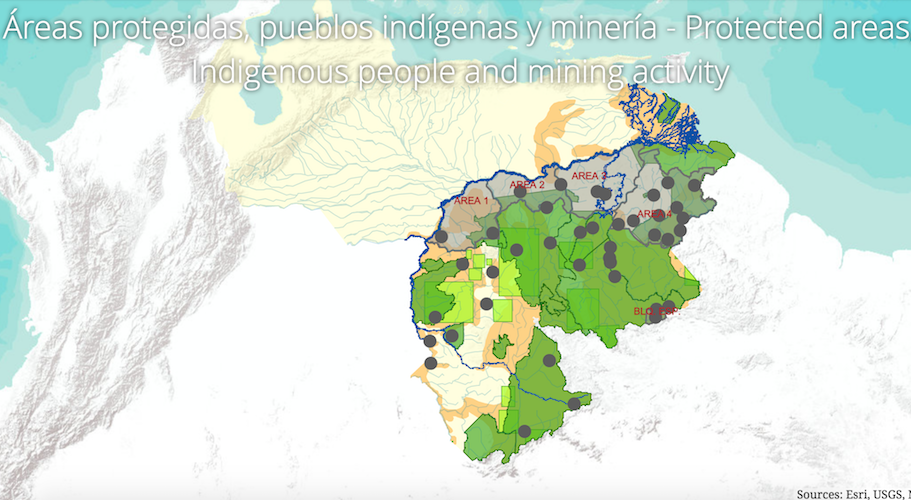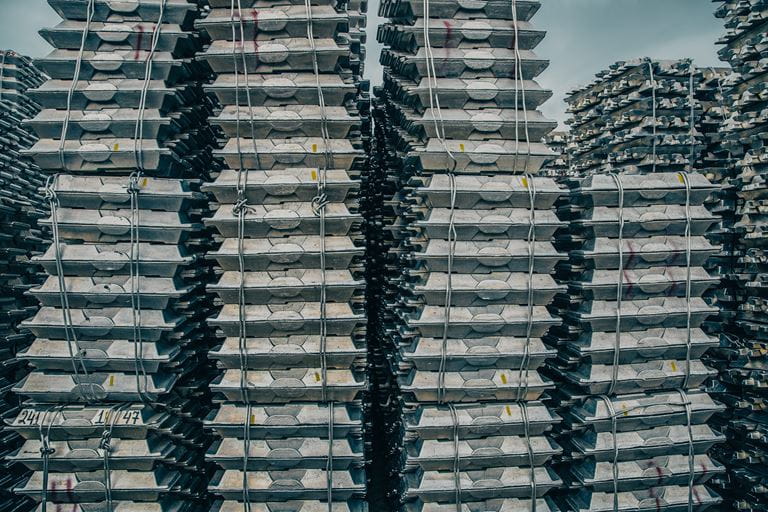Venezuelan government defends Mining Arc, environmentalists say it’s not working

Almost exactly two years ago, the Venezuelan government signed a decree creating the Mining Arc of the Orinoco River National Development Strategic Zone, a project that outlined a 111,843 Sq.Km concession area (12.2 per cent of the country’s landmass) for mining gold, diamond, iron ore, copper, bauxite, coltan, among other resources.
Twenty-four months later, environmentalists say that the idea of regulating mining operations in the northern part of the southeastern Bolívar state has failed. In an interview with El Nacional newspaper, former senator Alexander Luzardo, who wrote the environmental regulations of the 1999 National Constitution, said that very few of the 150 companies who expressed interest in investing in the Mining Arc actually presented concrete offers.
Mineral extraction, however, continues to take place in the area and has increased, Vilisa Morón, from the Venezuelan Society of Ecology, told the same newspaper. But exploitation is taking place in a disorderly manner, she said. “The initial idea was to create a mechanism to regulate what was being informally extracted, however, there isn’t any oversight and not only illegal exploitation is occurring, but also there isn’t any kind of environmental control or obligation to put in place remediation programs in the places that are being deforested,” Morón added.
As these experts views were published, the Ministry for Communication and Information issued a press release stating that, according to the president of CVM Técnica Minera Tecmín, José Muñoz-Ospino, 50 environmental impact assessments have been carried out around the Arc, mining is taking place only in 23 designated areas and government has signed 46 agreements with artisanal miners to “optimize” their gold production.
“The southern areas will not be touched. In the southern part of the Guayana region there are natural reserves, areas under a special management regime, and sacred ancestral areas that, according to (former) president Chávez, we have to respect and conserve,” Muñoz-Ospino said.
Yet, a special commission created by the National Assembly (parliament) investigated many of the issues taking place at the Mining Arc and concluded that, when it comes to environmental protection, the result of the establishment of this massive mining territory has been an increase in the fragility of protected areas as illegal mining operations continue to proliferate.
According to the commission, violations of environmental rules are happening even at authorized mining sites. “All areas under special management regime south of the Orinoco river, natural monuments like the tepuy mountains, forest reserves, and protected areas in the Bolívar, Amazonas and Delta Amacuro states are threatened by different types of mining operations,” the legislative body stated in its final report.
{{ commodity.name }}
{{ post.title }}
{{ post.date }}




2 Comments
Hugo Chavez
Come and invest in Mining in Venezuela. But if you do bring your own packed lunch. In our workers paradise we have everything but food.
patentbs
Why have I waited 2 years to get in on the bounties this place has to offer?
That’s right, Too much ‘stuff’ on one side… too little return on the other. If you make good you will be nationalized without reimbursement, etc, etc. wow what a bargain!